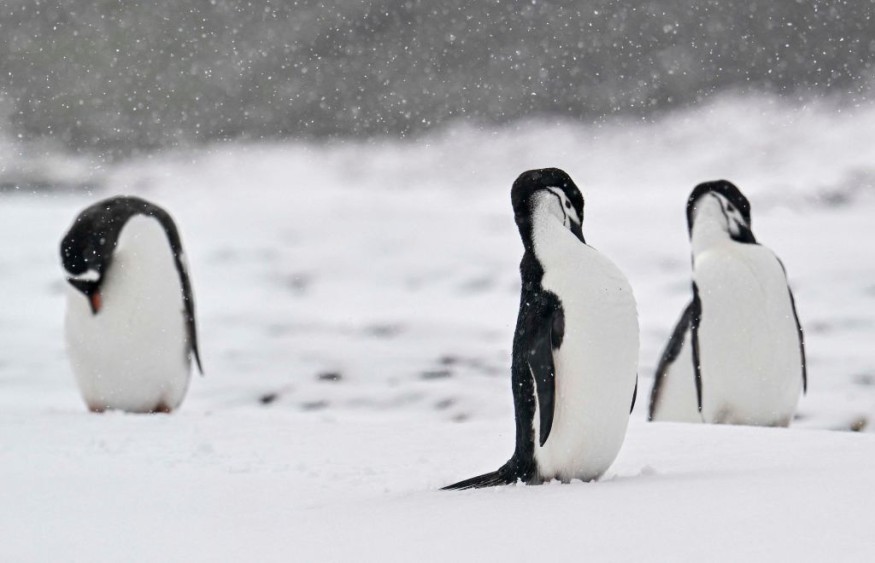
At least one king penguin is suspected to have perished from avian flu in Antarctica.
If confirmed, it will be the first time the extremely contagious H5N1 virus has killed a species in the wild, and it might have a devastating impact on the continent's penguin population.
Wiping The Species
The suspected case was discovered on South Georgia Island in the Antarctic region, according to the most recent Scientific Committee on Antarctic Research (Scar) update. A gentoo penguin was also thought to have died of H5N1 at the same place.
Separately, at least one gentoo penguin has been proven to have died from H5N1 in the Falkland Islands, 900 miles (1,500 kilometers) west of South Georgia, with more than 20 chicks either dead or showing signs.
Currently, the king penguins have gathered for the breeding season. If the fatal version of bird flu is identified in the deceased penguin, it has the potential to wreak havoc on entire colonies and spread across the region.
King penguins stand about 3 feet tall and are considered the world's second-largest penguins, after Emperor penguins.
Earlier this month, using satellite photos, researchers discovered previously undisclosed emperor penguin colonies along Antarctica's margins. According to scientists, the discovery of these nests adds a few thousand penguins to the previously estimated population of 550,000.
However, if the bird flu spreads to them, it may be terrible, wiping out the whole species.
Emperor penguins are already classified as "near threatened" and face extinction. The latest avian flu fear has exacerbated the issue of protecting them.
"The arrival of this H5N1 virus in the Antarctic towards the end of last year rang alarm bells because of the risk it posed to wildlife in this fragile ecosystem," said Ed Hutchinson, a molecular virologist at the MRC-University of Glasgow Centre for Virus Research.
H5N1 In Antarctica
Since H5N1 arrived in Antarctica, elephant seals have died in large numbers, as have fur seals, kelp gulls, and brown skuas.
According to Scar mapping data, there have been no recorded cases on the Antarctic mainland, but this could be because of the small number of personnel present to record potential fatalities.
Scientists are afraid that because the continent has not previously been exposed to H5N1, the wildlife lacks natural protection from the virus. According to the US Centers for Disease Control and Prevention, mammals who eat presumably sick birds or poultry have contracted bird flu in the past.
Through this route, the virus may be able to spread from birds to mammals, having a significant impact on the region's ecosystem.
Avian flu adds to the constraints already present in these pristine polar habitats; a 2018 study predicted that the climate crisis and overfishing meant Antarctica's king penguins "could disappear" by the end of the century.
The disease is also decimating wildlife populations in the Arctic. In December, it was revealed that, for the first time, a polar bear had perished from H5N1. As with penguins, it is probable that more bears perished unreported since they prefer to live in remote areas with few people.
Related Article : Bird Flu Reaches Antarctica, Results in Mass Elephant Seal Deaths
© 2025 NatureWorldNews.com All rights reserved. Do not reproduce without permission.





